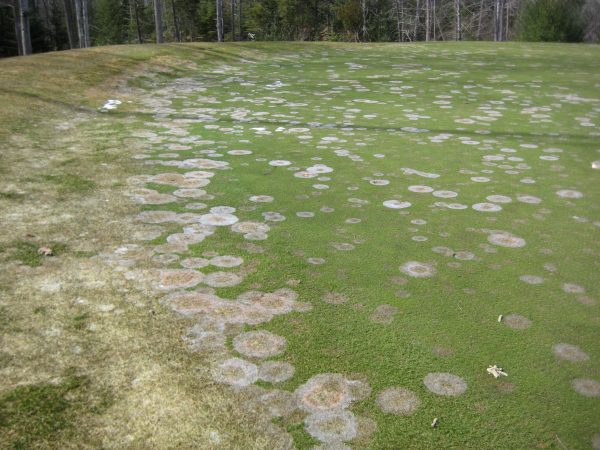After breaking records for rainfall amounts in most of the Midwest region this spring, superintendents need to be on high alert for Pythium root rot.
This disease has been more prevalent on bentgrass greens over the last 2-3 years in Wisconsin and Illinois. The picture below is a good example of what I have seen in the initial stages of the disease. The bullfrog just happened to pose perfectly next to this patch!

It may not always be the case but the lime green patches seem to be a common theme for the start of turf decline. In some instances, they can start as irregular patterns as well, but in all cases, it arises after long periods of rainfall no matter what time of year. If these symptoms appear, please send samples to your local university turf disease diagnostic lab right away. We are fortunate to have a great one in our backyard at the UW-Madison OJ Noer Facility/WI-TDL.
If diagnosed, Segway® Fungicide SC is the best curative fungicide for Pythium root rot. Always mix with a penetrant wetting agent and water in at least .1-.2”. Be sure to follow up in 2 weeks with Banol® fungicide at 2 oz/M and 11 lbs/acre of Signature™ XTRA Stressgard®. Finally, follow that application in 2 weeks with BASF® Insignia® SC Intrinsic® at 30.5 oz/acre and Signature Xtra at 11 lbs/acre.
If you have seen this disease in past years, the best action to take is to start on a preventative program. Just use the previous applications in reverse order starting in May when soil temperatures reach 55-60° in the spring. Hopefully, these techniques will help you diagnose and prevent a serious outbreak.
Thanks and praying for some dry days this summer!











